45/545RFE Pump Mystery Solved
This article refers specifically to Dodge trucks equipped with 45/545RFE transmissions. Because Dan’s shop works on many of these units, which are known to have pump issues, he stocks new pumps on the shelf. When Dan called he explained to me that when he disassembled one of these brand-new pumps he noticed that the screws that hold the pump spacer plate to the pump body were missing. He wanted to know whether this could be some kind of assembly-line error and whether he should exchange the pumps for new ones.

No Rear Lubrication
A JR403-E transmission from a 1995 Isuzu NPR came in over the counter to Luis Zabala’s transmission shop in Miami for repair of a front-seal leak. The unit was examined for damage because of the possibility of low-fluid-level conditions. The only wear or damage discovered was the pump bushing and seal.

Mount Up, Partner
The transmission in this scenario is the VT25 CVT in the Saturn Vue. Figure 1 shows the location of the top transmission mount. The bolt holes and the bolts that secure the mount to the transmission case are different lengths, which means the bolts can be installed in the wrong holes.

GM’s Hybrid Two-Mode 2MT70 Transmission, Part 1
As mentioned and promised in the February issue of Transmission Digest, we will take a quick peek at the front-wheel-drive version of the longitudinally mounted two-mode 2ML70 transmission, called the 2MT70 (Figure 1).
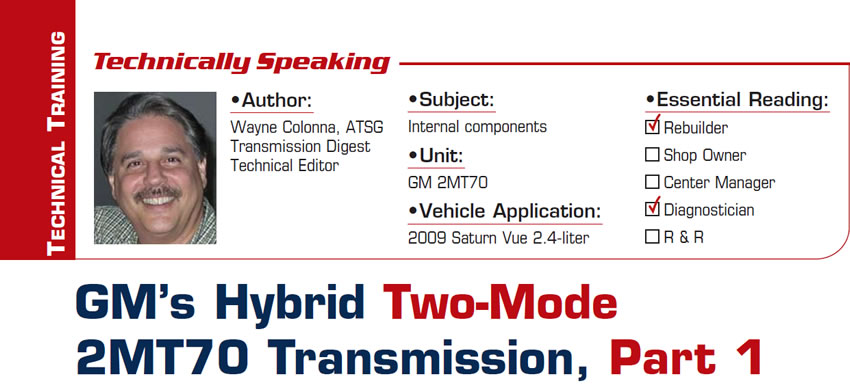
Preventing 48RE Transmission Throttle-Valve-Actuator Codes
In 2005, Dodge started using a transmission throttle-valve actuator (TTVA) instead of a TV cable on the 48RE diesel 2500 and 3500 Ram trucks. The actuator, attached to the case above the throttle-valve shaft, includes two potentiometers that provide input to the ECM as well as a DC motor that responds to ECM output. The bottom of the TTVA shaft features a D-shaped opening that fits onto the throttle shaft, allowing the actuator to mechanically stoke the TV valve and ultimately control transmission throttle pressure.

722.6 Cold Stall/Shudder, Part II
In last month’s article, technicians found that centrifugal force acting on oil trapped between the TCC piston and cover in the 722.6 converters was applying the clutch on cold startup. They also learned that the cold-stall issue could be eliminated by forcing the oil out of the cavity between the piston and cover. Finding the root cause of the cold-stall issue – and the subsequent fix – solved many other customer complaints and symptoms, including downshift shudders and tugging sensations.
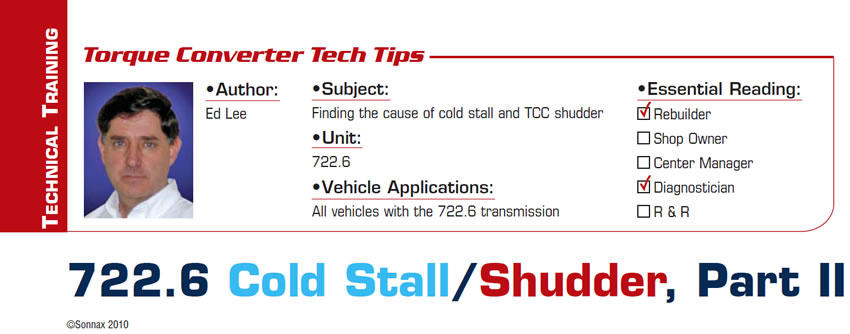
Another Option
I am sure that all of us who are in our late 40s and older can agree that valve bodies today are not what they used to be. Bore wear, valve wear, sleeve wear and leaking bore plugs are frequent ailments in most transmissions today.
Thanks be to several aftermarket companies that have developed repair kits to overcome these hurdles, saving transmission shops the expense of a new valve body.
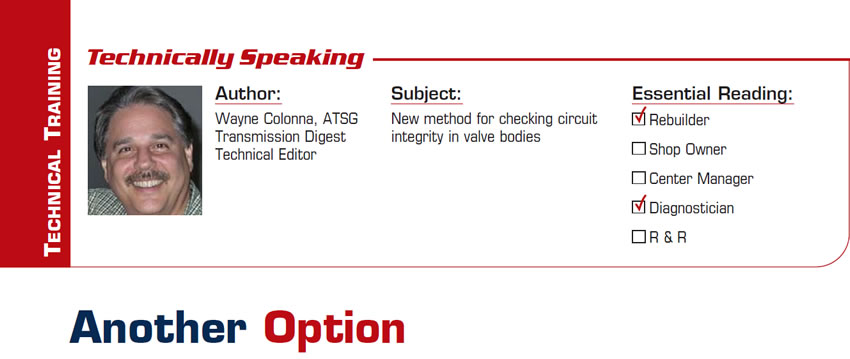
Is It Safe to Drive?
Knowing about specific transmission problems still doesn’t stop folks from asking whether it’s OK to keep driving their vehicle. A customer has a 4L60-E transmission that has no reverse, second or fourth and he wants to know whether he can drive it to work this week or would it last until his next payday. Another customer has a 4T65-E with a P1811 code and wants to know whether they can make a trip over the weekend, or yet another customer who has a 5R55E with a broken third-gear band wants to know whether it is safe to drive.
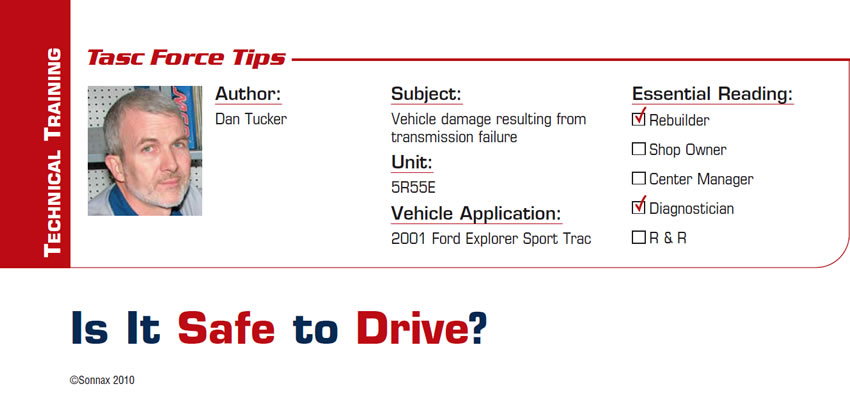
Mercedes 722.6: Cold Stall/TCC Shudder
For several years, technicians have been trying to solve the mysterious cold-stall issue in vehicles equipped with Mercedes 722.6 transmissions. When the problem was first identified, it was thought to be associated with aftermarket components. At that time, no one had seen the problem in a vehicle that still had only original equipment.
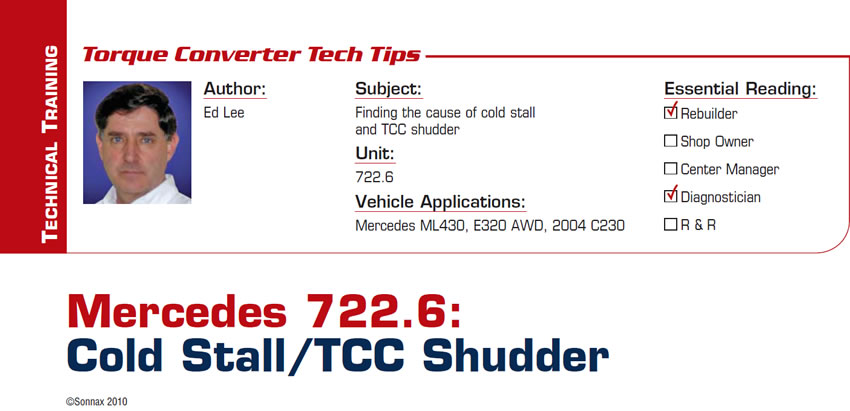
GM’s 2ML70 Hybrid Two-Mode Transmission
Having looked at the electrical and mechanical aspects of this rear-wheel-drive two-mode hybrid transmission in the past two issues, a brief look at the hydraulic components will finalize our comprehensive overview of the 2ML70.
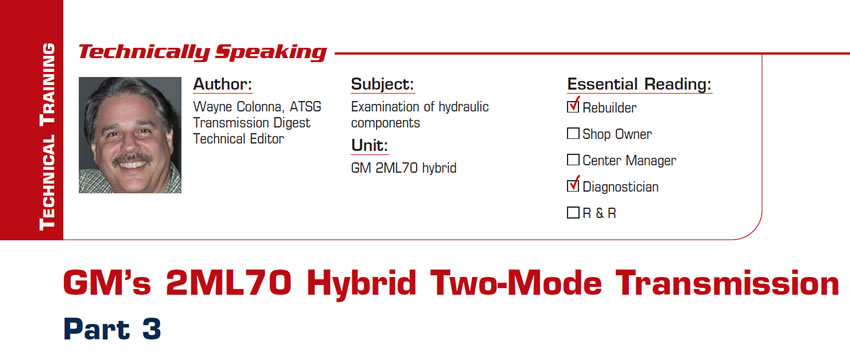
Taking the Fear out of Rebuilding the New GM Captive Clutch
The new General Motors captive clutch has four spring-steel straps that restrict the rotational movement of the piston. One end of each strap is riveted to the piston and the other end is riveted to the cover (figures 1a and 1b).
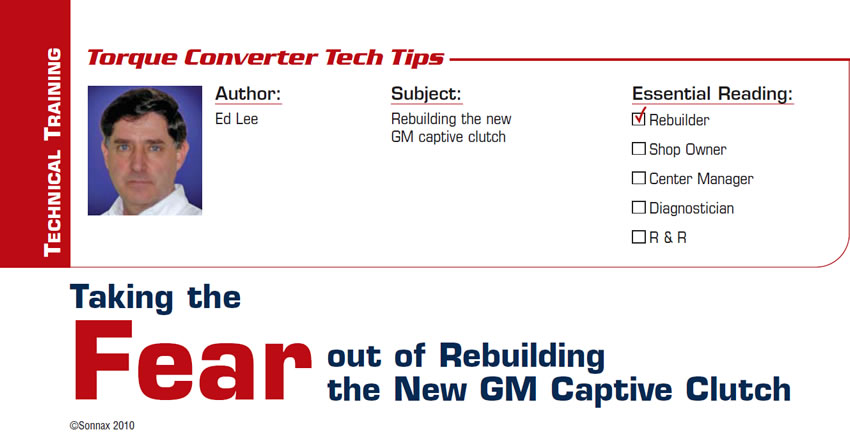
Pattern Failure
The definition of a pattern failure as far as transmissions go is seeing the same wear issue or broken part in every transmission of that type. This is such a case.
We have similar transmissions in two different car makes, the 6T70 from GM and the 6F50 from Ford. These transmissions are almost identical as far as the internal parts and pieces go, but they are controlled differently. The parts that fail in the 6T70 are different from those that fail in the 6F50, say the manufacturers.

